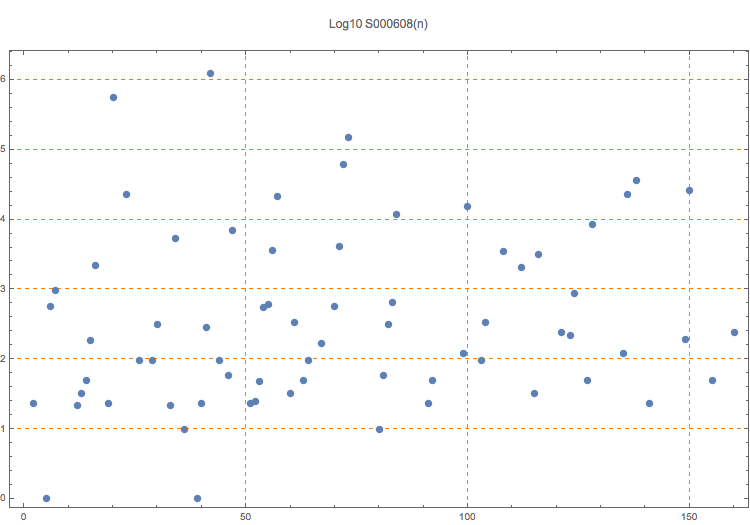Irregular table of numbers k such that the sum of the squares of n to n+k is a square.
0, 23, 0, 0, 1, 577, 960, 0, 0, 0, 0, 22, 32, 49, 183, 2208, 0, 0, 23, 552048, 0, 0, 22897, 0, 0, 95, 0, 0, 96, 311, 0, 0, 22, 5328, 0, 10, 0, 0, 1, 23, 288, 1221024, 0, 95, 0, 58, 6888, 0, 0, 0, 23, 25, 48, 553, 599, 3600, 21599, 0, 0, 32, 337, 0, 49, 95, 0, 0
1
Each row starts with a 0 because n^2 is a square. This is derived from Table III of the Bremner et al. paper. See S000609 for a slightly different presenation of these results. Sequence A180442 lists the rows that have more than the 0 term.
T. D. Noe, Plot of 100 rows
T. D. Noe, Table of 100 rows
A. Bremner, R. J. Stroeker, and N. Tzanakis, On Sums of Consecutive Squares, J. Number Theory 62 (1997), 39-70.
(Mma) PerfectSquareQ[n_] := JacobiSymbol[n, 13] =!= -1 && JacobiSymbol[n, 19] =!= -1 && JacobiSymbol[n, 17] =!= -1 && JacobiSymbol[n, 23] =!= -1 && IntegerQ[Sqrt[n]]; g[m0_, m1_] := (1 - m0 + m1) (-m0 + 2 m0^2 + m1 + 2 m0 m1 + 2 m1^2)/6; Table[Select[Range[0, 2000000], PerfectSquareQ[g[n, # + n]] &], {n, 100}]
nonn,tabf
T. D. Noe, Apr 28 2015
